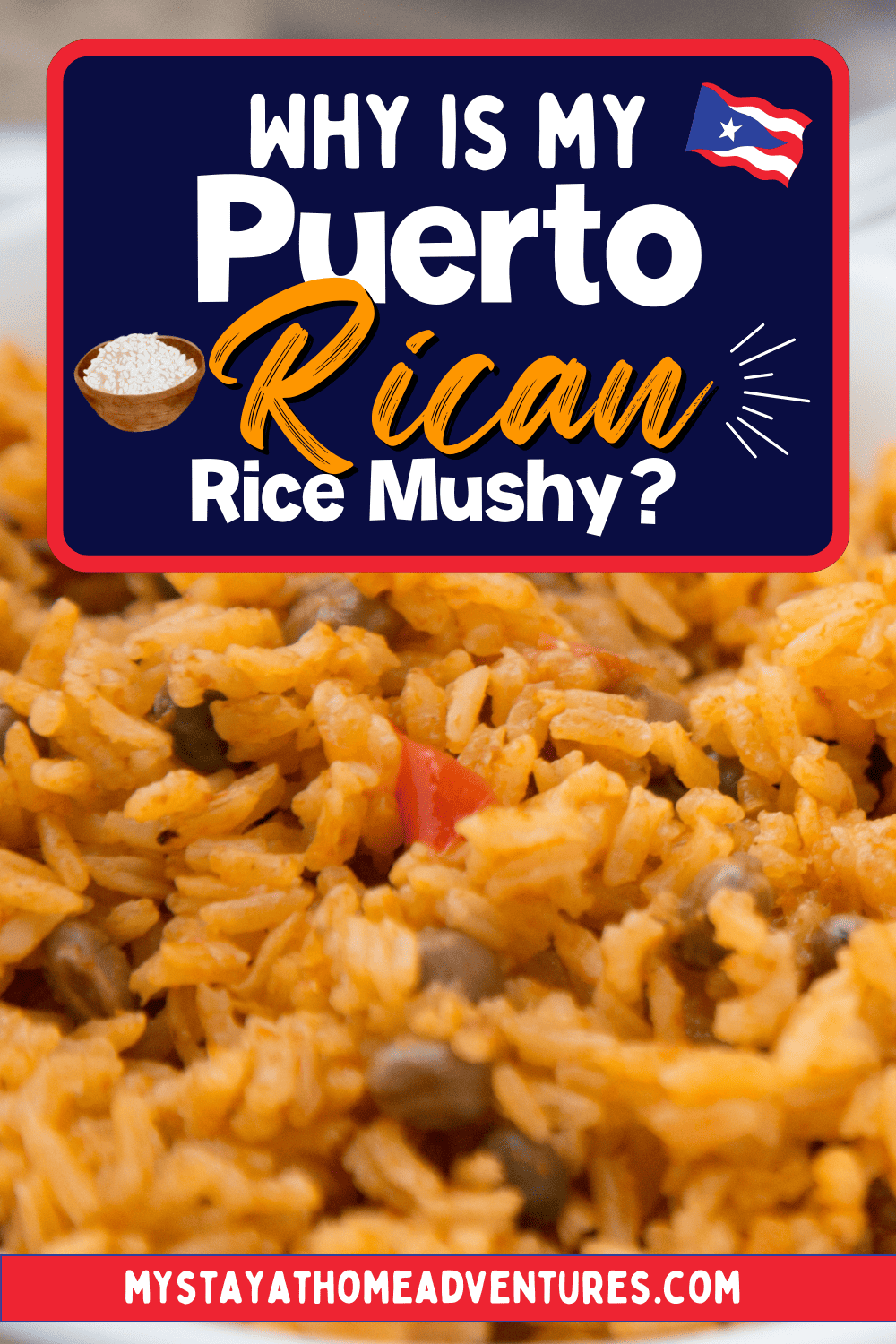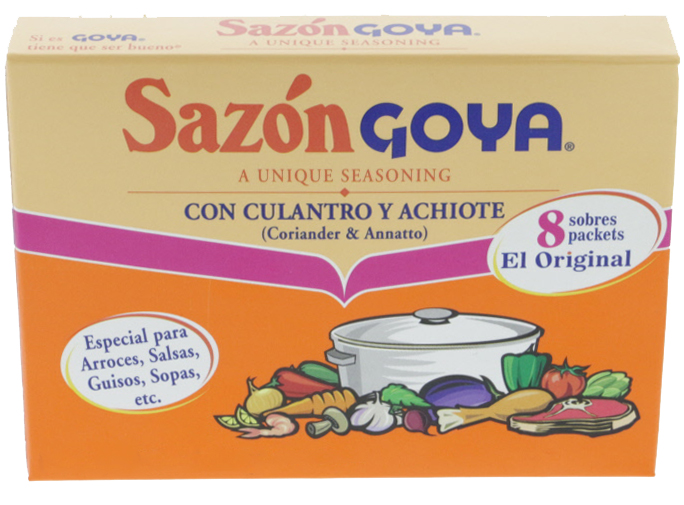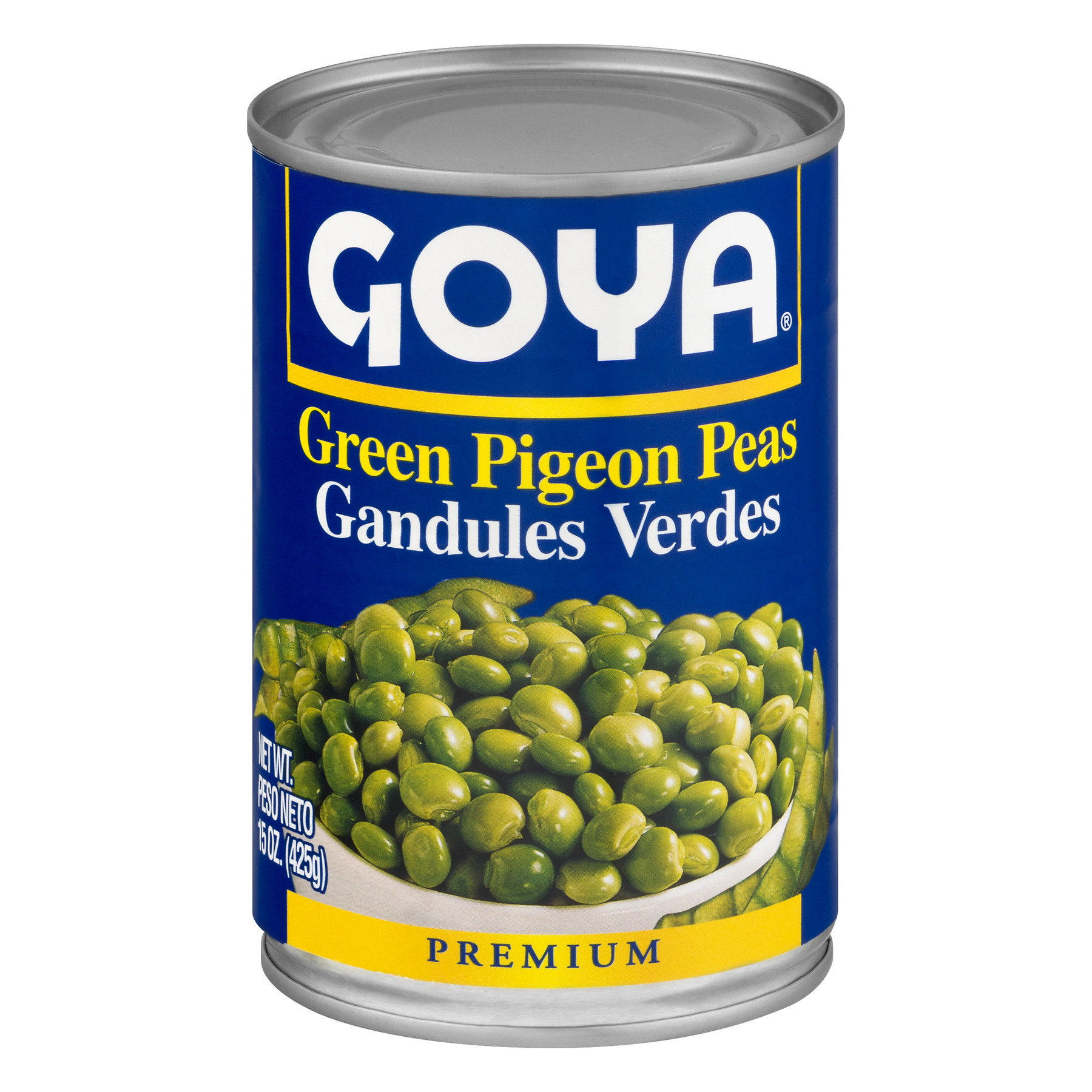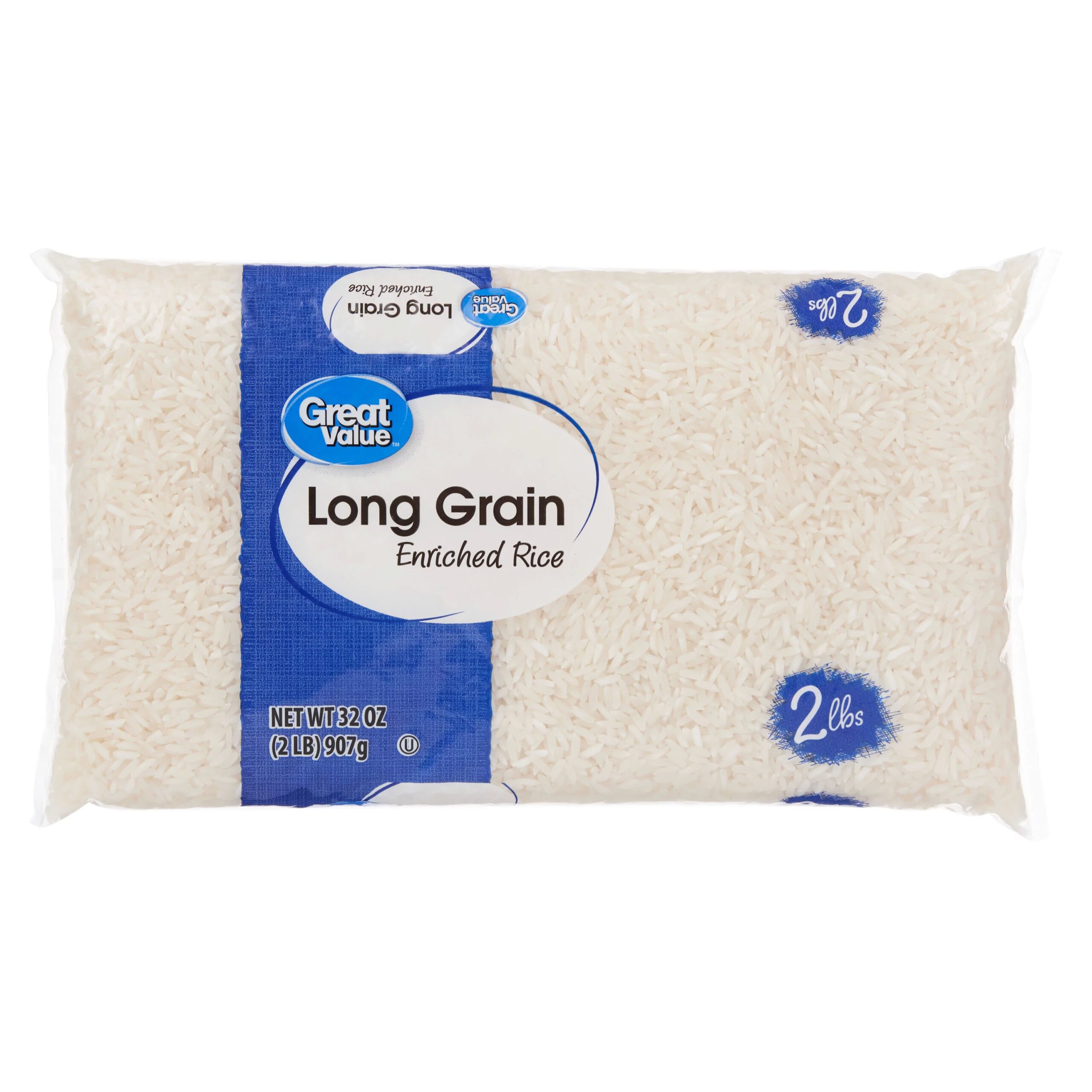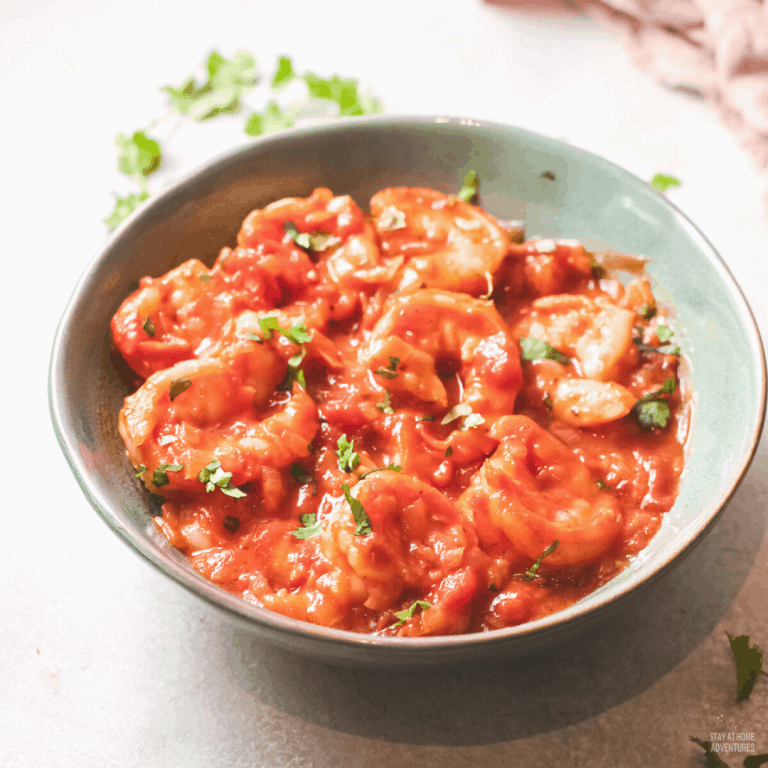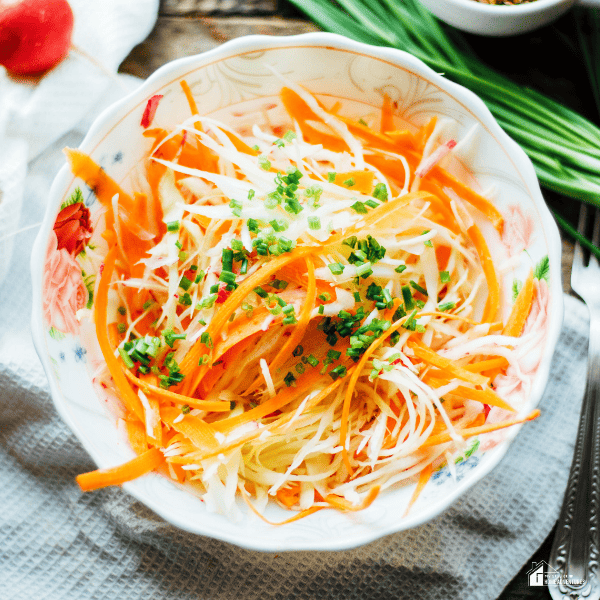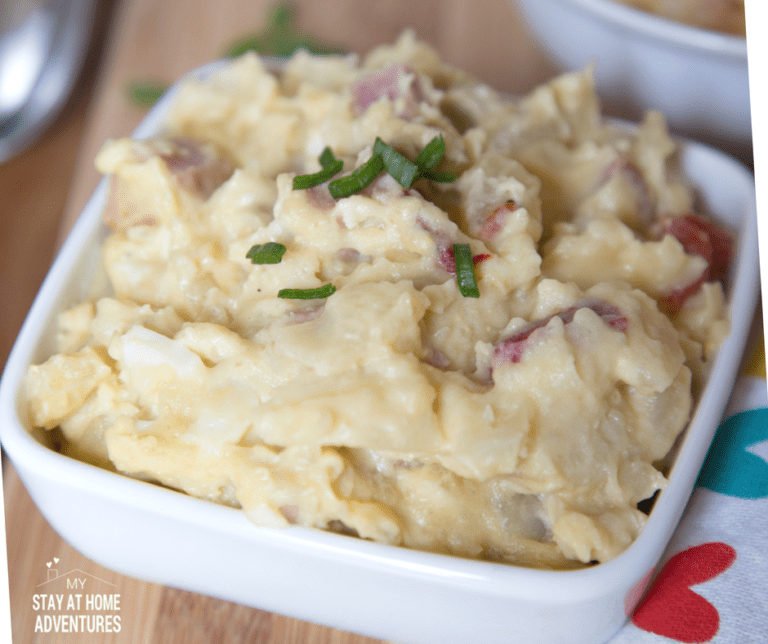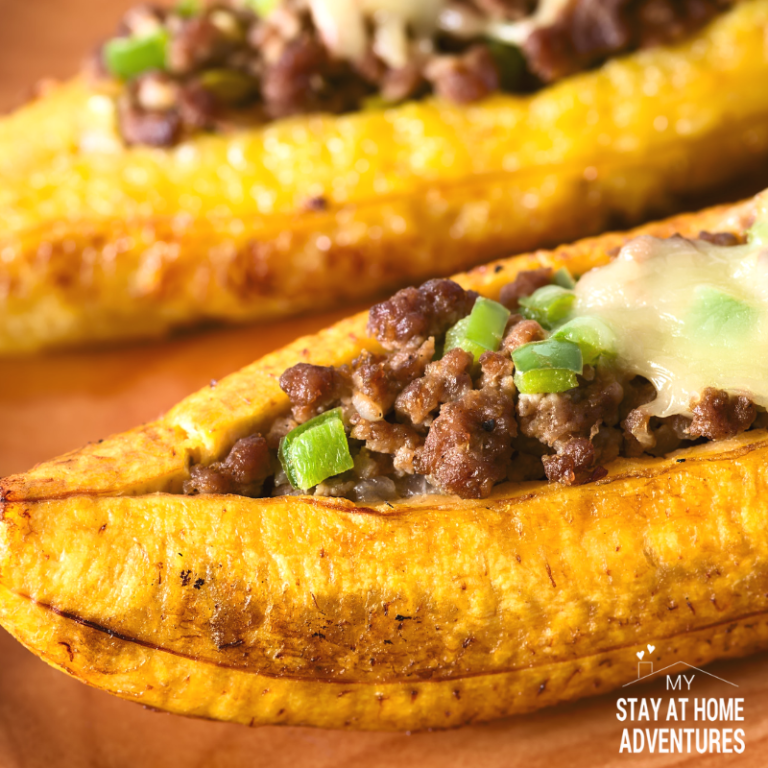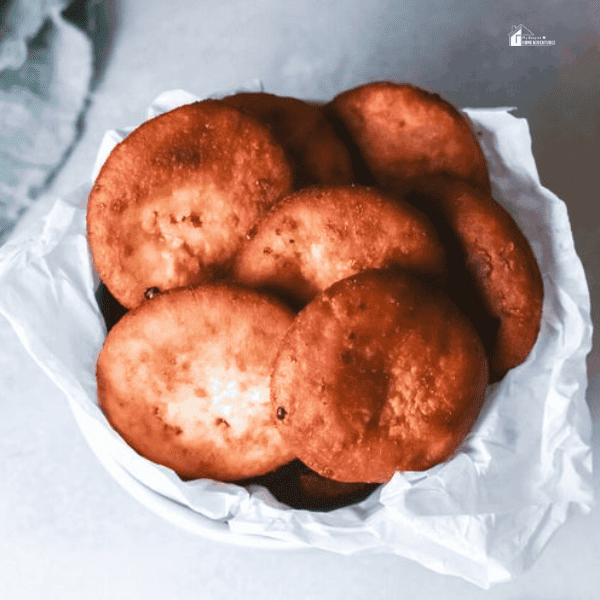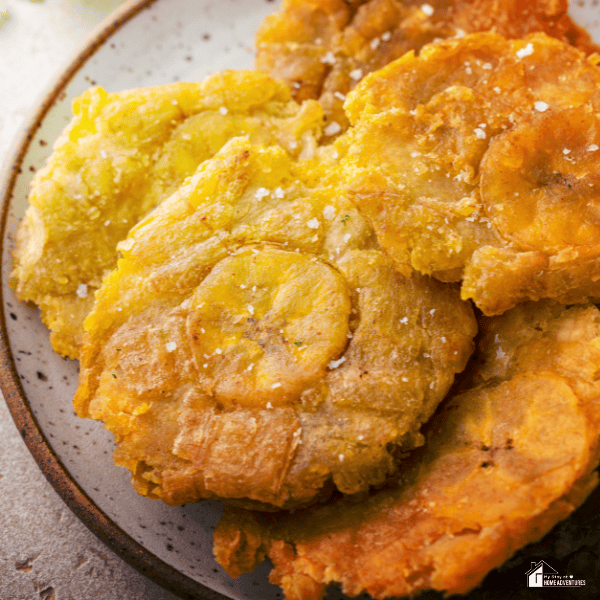Why Is My Puerto Rican Rice Mushy
This post may contain affiliate links which might earn us money. Please read my Disclosure and Privacy policies hereWhen it comes to cooking Puerto Rican rice dishes, it's important to choose the right type of rice. Short-grain rice, such as Arborio or Bomba rice, is commonly used in Puerto Rican cuisine. When cooked, these varieties have a higher starch content, which gives the rice a creamy texture.
There are a few possible reasons why your Puerto Rican rice might turn out mushy. One common reason is using an improper rice-to-water ratio. Too much water can lead to a mushy texture. Another factor could be overcooking the rice or not giving it enough time to rest and finish steaming after cooking. Additionally, using the wrong type of rice, such as long-grain instead of medium or short-grain, can also contribute to the mushiness. It's important to follow the recipe instructions carefully and adjust as needed to achieve the desired texture for your Puerto Rican rice.
Before we continue, let's answer some popular questions!
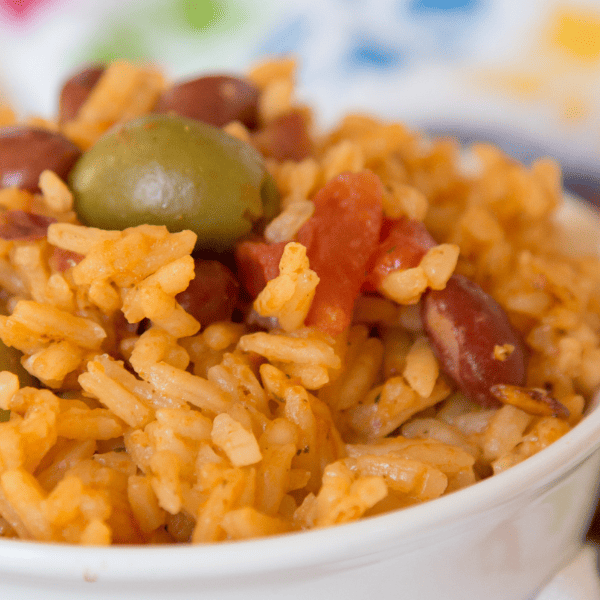
Why is my Puerto Rican rice mushy?
If you are experiencing your Puerto Rican rice turning out mushy instead of the fluffy texture you were expecting, there could be a few possible reasons for this issue.
Firstly, the ratio of liquid to rice could be off. If you added too much liquid, the excess moisture can lead to a mushy consistency. Make sure to measure the amount of water accurately according to the recipe instructions.
Another factor to consider is the cooking time. Overcooking the rice can result in a softer, mushy texture. Be sure to follow the recommended cooking time provided in your recipe and check the rice at the suggested cooking time to prevent overcooking.
Lastly, it's important to fluff the rice after it's cooked properly. Using a fork, gently separate the grains to avoid clumping and achieve a lighter texture.
By paying attention to these factors, you can prevent your Puerto Rican rice from becoming mushy and enjoy a delicious, fluffy dish.
Below is a table with issues as to why your Puerto Rican rice is mushy:
| Issues Causing Mushy Puerto Rican Rice | Solutions |
|---|---|
| Too much water: Using too much water can make the rice mushy and overcooked. | Measure your water: Use the correct water to rice ratio. For most types of rice, this is usually around 2 cups of water for every 1 cup of rice. |
| Stirring too often: Stirring the rice too frequently can break up the grains and cause it to become mushy. | Limit stirring: Only stir the rice when necessary, such as when it first starts to cook to prevent sticking. After that, let it cook undisturbed. |
| Incorrect rice variety: Some types of rice are more prone to becoming mushy because they have a higher starch content. | Choose the right rice: Medium or long grain rice is typically recommended for Puerto Rican recipes. |
| Overcooking: Rice that's cooked for too long can absorb too much water and become mushy. | Insufficient rinsing: Excess starch can make the cooked rice sticky and mushy if the rice isn't rinsed properly. |
| Insufficient rinsing: If the rice isn't rinsed properly, excess starch can make the cooked rice sticky and mushy. | Rinse thoroughly: Rinse the rice under cold water until the water runs clear before cooking. |
Why does my arroz con gandules come out mushy?
You're not alone if you've been frustrated with your arroz con gandules turning out mushy. Many struggle to get the perfect texture for their Puerto Rican rice dish. While there may be several factors that contribute to a mushy consistency, here are a few common possibilities to consider:
- Not rinsing the rice: Rinsing the rice before cooking can remove excess starch, leading to a sticky and mushy texture. Make sure to rinse the rice thoroughly before adding it to the pot.
- Using too much liquid: Adding too much water or broth can result in a softer texture. Following the recommended ratio of rice to liquid is important to ensure the right consistency.
- Cooking at too high a temperature: Cooking the rice at a high heat can cause it to cook too quickly and become mushy. It's best to cook arroz con gandules over low to medium heat, allowing the rice to absorb the liquid slowly and evenly.
By considering these factors and adjusting your cooking process, you can achieve perfectly fluffy and flavorful arroz con gandules every time.
You might enjoy these Puerto Rican rice recipes:
- Sausage with Puerto Rican Rice with Pigeon Peas
- Puerto Rican Rice and Pork Instant Pot
- Arroz con Gandules Instant Pot Recipe
How to Keep Sticky Rice from Getting Mushy
When it comes to cooking sticky rice, getting the perfect texture can be a challenge. Nobody wants mushy rice that sticks together and loses its individual grains. Here are some tips to help you avoid that:
- Rinse the rice: Before cooking, rinse the rice thoroughly to remove excess starch. This will prevent it from becoming overly sticky.
- Use the right ratio of water: Follow the instructions on the package or use a 1:1.5 ratio of rice to water for stickier rice. Adjust the water amount slightly based on personal preference.
- Soak the rice: Soak the rice in water for at least 30 minutes before cooking. This will help the rice absorb water evenly and cook more evenly.
- Cook with gentle heat: Use a low heat setting when cooking sticky rice. This slower cooking process allows the moisture to be absorbed without turning the rice mushy.
- Avoid stirring too much: Resist the urge to stir the rice while it's cooking constantly. This can cause the starch to release and make the rice stickier.
By following these tips, you can enjoy perfectly cooked sticky rice with individual grains and the desired texture, avoiding the problem of mushy rice.
Proper water-to-rice ratio
Achieving the perfect texture for Puerto Rican rice requires the right water-to-rice ratio. Generally, a ratio of 2 cups of water to 1 cup of rice works well. However, this can vary depending on the type of rice and personal preference. Following the rice packaging or recipe instructions is essential to ensure the correct ratio.
Importance of rinsing the rice
Rinsing the rice before cooking is crucial in preventing mushy Puerto Rican rice. It helps remove excess starch that can make the grains stick together and become overly soft. To rinse the rice, place it in a fine-mesh sieve and rinse under cold water until the water runs clear.
By understanding the basics of rice cooking, choosing the right type of rice, using the proper water-to-rice ratio, and rinsing the rice beforehand, you can avoid ending up with mushy Puerto Rican rice and enjoy perfectly cooked grains every time.
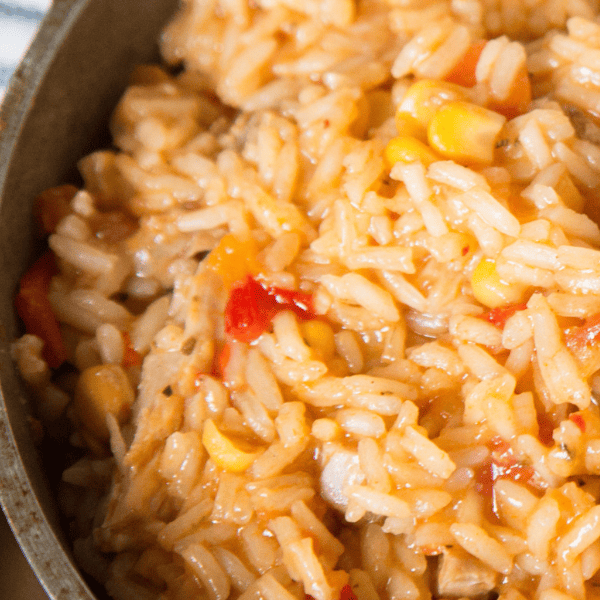
Common mistakes that cause mushy rice
Overcooking the rice
When it comes to why is my Puerto Rican rice mushy, one of the most common reasons is overcooking. When rice is cooked for too long, it absorbs too much water and becomes soft and sticky. To avoid this, it's important to follow the recommended cooking time on the package and check the rice regularly to ensure it is cooked to perfection.
Insufficient or excessive water
The amount of water used when cooking rice is crucial. Too little water can result in undercooked rice that is hard and grainy, while too much water can lead to mushy rice. Measuring the water accurately and following the recommended water ratio to rice is important.
Using the wrong type of rice
Different types of rice have different cooking times and absorbency levels. Using the wrong type of rice can result in a mushy texture. For example, short-grain rice tends to be stickier than long-grain rice. Choosing the right type of rice for your desired texture is important.
Not allowing the rice to rest properly
After cooking, it's important to let the rice rest for a few minutes before fluffing it with a fork. This allows the excess moisture to evaporate and helps prevent mushiness. Rushing this step can result in a wet and clumpy texture.
By avoiding these common mistakes, you can ensure that your Puerto Rican rice turns out fluffy and perfectly cooked every time.
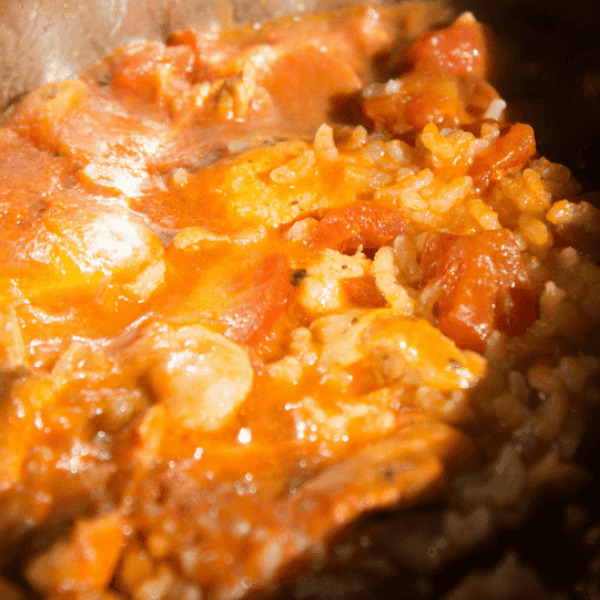
Tips for achieving fluffy and separated grains
Toasting the rice before cooking
Toasting the rice before cooking can help prevent it from becoming mushy. Heat a dry, heavy-bottomed pot over medium heat and add the rice. Stir it constantly until it becomes fragrant and starts to turn golden brown. This step helps to create a protective layer around the rice grains, preventing them from absorbing too much water during cooking.
Using a heavy-bottomed pot
A heavy-bottomed pot ensures even heat distribution, which is crucial for evenly cooking rice. A heavy pot helps to prevent hot spots that can lead to uneven cooking and mushy rice. It also helps to retain heat, allowing the rice to cook more evenly and preventing it from becoming overly soft or sticky.
Letting the rice rest after cooking
After the rice is cooked, it's important to let it rest for a few minutes before fluffing it with a fork. This allows the steam to escape and prevents excess moisture from being trapped in the rice, which can make it mushy. Fluffing the rice gently with a fork also helps to separate the grains and create a light and fluffy texture.
By following these tips, you can achieve perfectly cooked Puerto Rican rice with fluffy and separated grains. Enjoy your delicious dish without any mushiness!
Troubleshooting tips
How to salvage overcooked rice
If your Puerto Rican rice turns out mushy, don't worry! There are a few tricks you can try to salvage it. First, drain any excess water from the pot and transfer the rice to a baking sheet. Spread it out evenly and let it cool for a few minutes. This will help remove excess moisture. Then, use a fork to fluff the rice, breaking up any clumps gently. If the rice is still too soft, you can try placing it in the oven at a low temperature for a few minutes to help dry it out further.
Adjusting water ratio for different types of rice
The water ratio is crucial when cooking rice. For Puerto Rican rice, the general rule is to use 2 cups of water for every cup of rice. However, different types of rice may require slight adjustments. If your rice consistently turns out mushy, try reducing the amount of water slightly and see if that improves the texture.
Finding the right cooking time for your stove
Cooking times can vary depending on your stove and the heat intensity. You may need to adjust the cooking time if your rice is consistently mushy. Start by reducing the cooking time by a few minutes and check the texture. Keep experimenting until you find the perfect balance between fully cooked and fluffy rice.
Remember, practice makes perfect when it comes to cooking rice. Don't be discouraged if your first few attempts are not ideal. With these troubleshooting tips and a little bit of patience, you'll soon be able to enjoy perfectly cooked Puerto Rican rice every time!
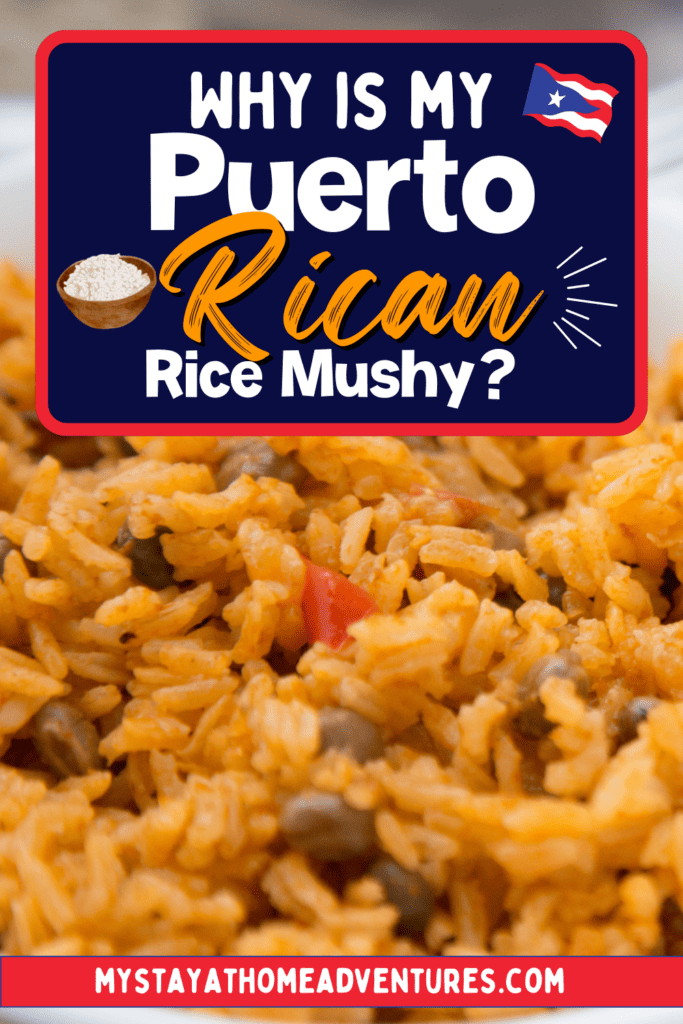
Exploring alternative cooking methods
For those who have experienced the frustration of ending up with mushy Puerto Rican rice, there are alternative cooking methods that can help you achieve the perfect texture.
Rice cooker or Instant Pot options
One option to consider is using a rice cooker or an Instant Pot. These appliances are designed to cook rice evenly and prevent it from becoming mushy. Following the manufacturer's instructions and using the appropriate water-to-rice ratio ensures that your Puerto Rican rice turns out fluffy and separate.
Pilaf-style cooking techniques
Another technique to try is the pilaf-style cooking method. This involves sautéing the rice in oil or butter before adding the liquid. Coating the grains with fat creates a barrier that helps prevent them from absorbing too much moisture. This can result in a firmer, more separated texture for your Puerto Rican rice.
By experimenting with these alternative cooking methods, you can overcome the challenge of mushy Puerto Rican rice and enjoy a delicious dish with the perfect texture. Remember to adjust your cooking time and liquid ratios accordingly, and don't be afraid to try different techniques until you find the one that works best for you.
Experimenting with seasonings and flavorings
Cooking perfect Puerto Rican rice can be a bit tricky, but with a few adjustments, you can achieve that fluffy, flavorful texture you desire.
Adding sofrito or other aromatic ingredients
Sofrito: One reason your rice may be mushy is the lack of flavor. Adding sofrito, a traditional Puerto Rican seasoning made with onions, garlic, peppers, and herbs, can enhance the taste of your rice. It adds depth and complexity to the dish, making it more enjoyable.
Annatto oil or saffron: Another factor that can affect the texture of your rice is the lack of vibrant color. Annatto oil or saffron can be used to give your rice that beautiful yellow hue. Not only do they add color, but they also infuse the rice with a subtle flavor that complements the dish.
By experimenting with different seasonings and flavorings like sofrito, annatto oil, or saffron, you can elevate the taste and appearance of your Puerto Rican rice. Remember to adjust the cooking time and liquid ratio as well for that perfect fluffy consistency.
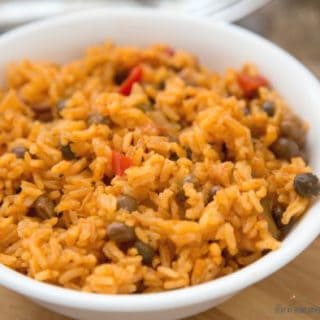
Arroz con Gandules Instant Pot Recipe
Authentic Puerto Rican Arroz con Gandules (Rice with pigeon peas) made using an Instant Pot.
Ingredients
- 2 cups of white rice
- 2 Tablespoons of Sofrito
- 1 (15 oz) can of gandules (pigeon peas)
- 1 Packet of sazon
- 4 ounces of tomato sauce
- 2 cups of chicken broth
- 2 Tablespoons of olive oil
- 2 Tablespoons of olives
- Salt and pepper to taste
Instructions
- Hit Sauté button and add olive oil, sofrito, olives, tomato sauce, sazon and cook for about 3 minutes until everything is blended well.
- Add the gandules and sauté for another minute or two.
- Add the chicken broth and rice and stir
- Cancel Sauté
- Hit rice 12 minutes or Rice button and it will auto cook.
- Serve
Notes
You can use water instead of chicken broth.
You can use chicken bourbon.
You can skip the olives if you don't like them.
You can make your own Sazon by getting the recipe here.
Recommended Products
As an Amazon Associate and member of other affiliate programs, I earn from qualifying purchases.
Nutrition Information:
Yield: 8 Serving Size: 1Amount Per Serving: Calories: 124Total Fat: 5gSaturated Fat: 1gTrans Fat: 0gUnsaturated Fat: 3gCholesterol: 1mgSodium: 394mgCarbohydrates: 17gFiber: 2gSugar: 1gProtein: 3g

